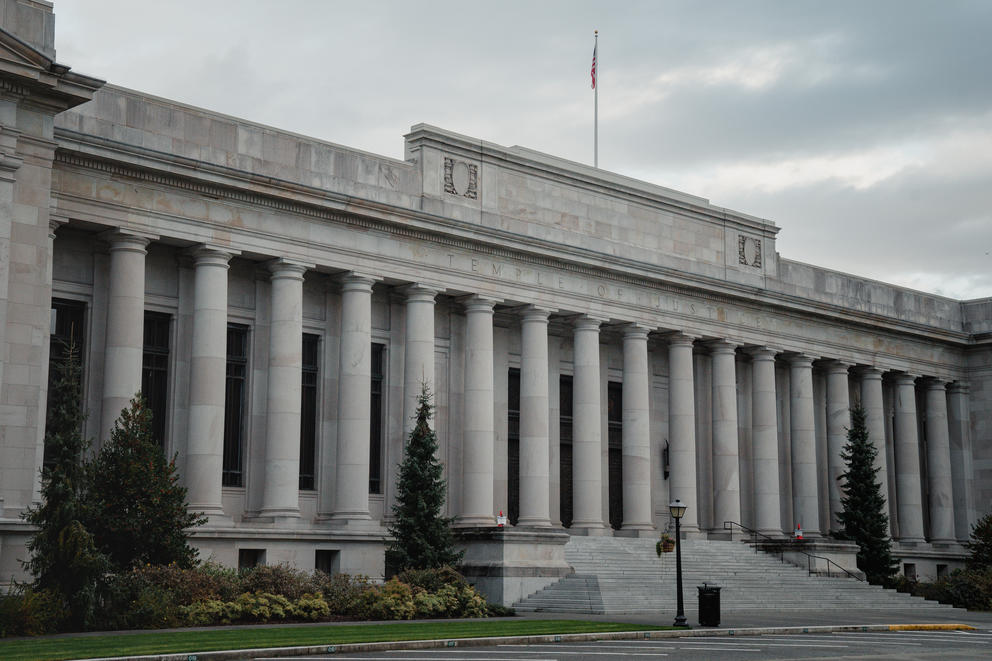The Redistricting Commission, which was charged with approving new congressional and legislative district maps, didn’t approve those new maps by the commission’s constitutional deadline of midnight Nov. 15. The commission then said it was ceding the responsibility for redistricting to the state Supreme Court, following a process outlined in the state constitution.
Yet on Friday, the court announced it would not be taking on the responsibility of redrawing the state’s political boundaries.
In a five-page order, the court’s nine justices said the Redistricting Commission actually had met its statutory obligations, despite not releasing completed redistricting maps until a day after its deadline.
“This is not a situation in which the Supreme Court must step in because the Commission has failed to agree on a plan it believes complies with state and federal requirements,” the court’s order reads. “The court concludes that the primary purpose of achieving a timely redistricting plan would be impeded, not advanced, by rejecting the Commission’s completed work.”
That means the commissioners’ agreed-upon redistricting maps — which the commission released Nov. 16, a day after the Nov. 15 deadline — will now go to the Legislature for final approval. The Legislature can make only small changes to the maps, meaning the commission’s agreed-upon maps will largely remain as they are.
The once-per-decade redistricting process rebalances the population of political districts based on the latest results of the U.S. census. It also has the power to significantly reshape the state’s politics, determining which party has an advantage in a certain district, who is eligible to run for legislative offices and whether certain communities are split between districts in a way that dilutes their voting power.
In Washington state, this work is carried out by a bipartisan commission with four voting members — two appointed by Democrats and two by Republicans.
The confusion over whether this year’s commission succeeded or failed has largely centered on what exactly constitutes a redistricting “plan.”
In the final moments of their Nov. 15 meeting, just seconds before midnight, the Redistricting Commission’s four voting members approved what the commission chair described in a letter to the Supreme Court as final congressional and legislative redistricting plans.
However, the commissioners didn’t tell the public what they were voting on at the time. And, according to multiple commissioners, the agreements they voted on weren’t laid out in writing.
The commissioners said they instead voted on a verbal agreement that would later be translated into actual redistricting maps. Those were the maps commissioners eventually released Nov. 16, a day after their deadline.
In its Friday order, the court said the commission’s last-second votes on those plans — whatever they were — were sufficient to comply with the state redistricting law’s Nov. 15 deadline.
But the court said it wasn’t making any judgment about whether the plan complied with other legal requirements, such as the federal Voting Rights Act, or other laws, such as the state’s Open Public Meetings Act.
Much of the commission’s internal debate had been over how to create a district in the Yakima Valley that would comply with the Voting Rights Act by empowering the region’s large population of Latino voters. The state Supreme Court order doesn't address whether the commission’s agreed-upon maps comply with this federal law.
The court’s silence on that issue was disappointing to state Sen. Majority Leader Andy Billig, D-Spokane.
“We had hoped the Court would take a closer look at several aspects of the map that may not comply with state and federal laws and make changes, especially related to the proposed Legislative District in the Yakima Valley,” Billig said in a written statement Friday. “We are concerned that this district may not comply with the Federal Voting Rights Act.”
Still, Billig said, “Even if we are not in full agreement, we respect the Court's authority and will move forward accordingly.”
The court’s order also was silent on whether the commission acted with the public transparency state law requires. For most of their final meeting on Nov. 15, commissioners had discussed the redistricting plans in private caucus meetings, out of public view, despite being required by the Open Public Meetings Act to conduct their debates in public.
If the commission is found to have violated the open-meetings law, it is possible their work could still be thrown out or invalidated.
At least one lawsuit has been filed alleging the commission broke the law.
The nonprofit Washington Coalition for Open Government is prepared to file another, separate lawsuit challenging the maps because of the secretive manner in which they were approved, said Mike Fancher, the organization’s president.
“The actions of the commission clearly violated the Open Public Meetings Act and that renders their action invalid, in our judgment,” said Fancher, a former executive editor of The Seattle Times. “This just can’t be allowed to stand, the way it happened.”
Members of the Redistricting Commission didn’t immediately respond to messages seeking comment on that issue.
They did, however, praise the court for respecting the work they did as a commission, rather than throwing the commission’s work out and drawing new maps from scratch.
Joe Fain, one of the two Republican appointees to the commission, noted that this year’s commissioners had less time to complete their work. That was due to the late release of census data, as well as a constitutional amendment passed in 2016 that moved the commission’s deadline up 45 days. Previous redistricting commissions were allowed until Jan. 1.
“This commission actually finished its work faster than any commission in state history,” Fain wrote in a text message Friday. “The court rightfully decided not to quibble about a matter of hours.”



